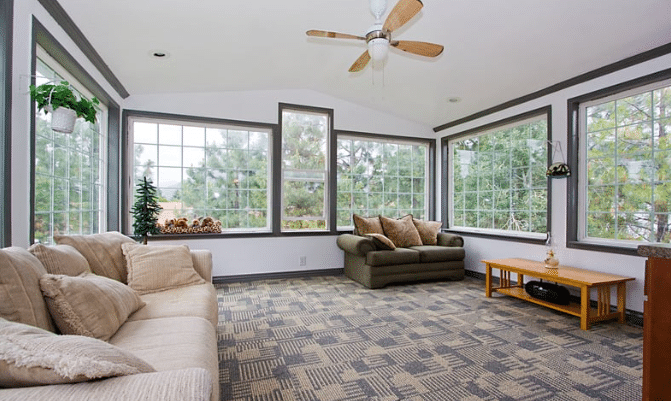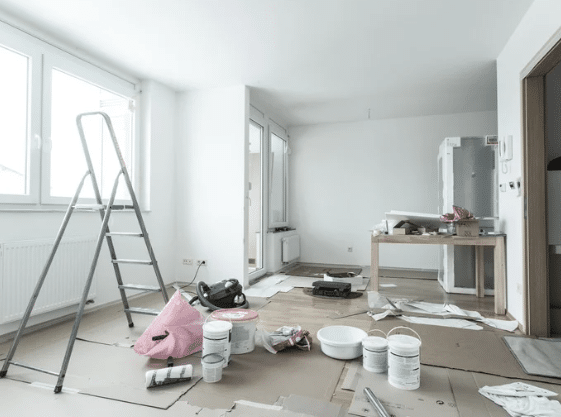Insulated vinyl siding is a smart way to boost your home’s look and energy efficiency. Its special design helps keep your house warmer in the winter and cooler in the summer, which can lower your energy bills. More homeowners are now choosing siding replacement in North Richland Hills, TX because this option not only lasts longer but also adds real value to their homes.
With insulated vinyl siding, you get a low-maintenance solution that stands up well to tough weather. Its clean, modern finish adds curb appeal, while the built-in insulation helps reduce outside noise. Homeowners interested in siding replacement appreciate how it improves both comfort and savings. This siding choice is a lasting upgrade that makes a big difference for any home.
What is Insulated Vinyl Siding?
Insulated vinyl siding is a smart choice for homeowners looking to improve their home’s energy efficiency. It combines regular vinyl siding with a foam insulation layer that helps keep indoor temperatures steady and lowers heating and cooling bills. This design also reduces outside noise, creating a quieter living space.
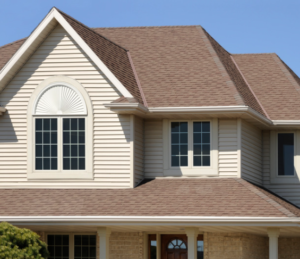
In addition to saving energy, insulated vinyl siding offers better protection against weather and impacts, strengthening your home. Many homeowners in North Richland Hills, TX, choose insulated vinyl siding because it improves both the look and function of their homes, ensuring lasting comfort and style.
Why Insulated Vinyl Siding Is a Smart Choice
Insulated vinyl siding offers several advantages beyond just lowering energy bills. This siding option includes a built-in foam layer, typically made of expanded polystyrene (EPS), that enhances the home’s thermal barrier. Here’s how it excels:
Enhanced Energy Efficiency
Insulated vinyl siding helps reduce energy loss by minimizing thermal bridging, where heat passes through wall studs. This leads to lower heating and cooling costs and consistent indoor temperatures. For homeowners planning siding replacement, energy savings are a key reason to choose insulated vinyl siding.
Improved Curb Appeal
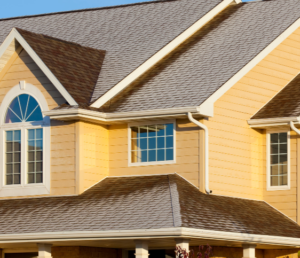
Insulated vinyl siding enhances your home’s look with a variety of colors, styles, and textures. The foam backing provides added rigidity, creating a smoother, more polished appearance. This upgrade is ideal for homeowners wanting both improved performance and aesthetic appeal.
Noise Reduction
Living near busy streets or loud areas? Insulated vinyl siding reduces outdoor noise, providing a quieter home environment. The foam insulation layer absorbs sound, making it a smart choice for noise control and added comfort.
Durability Against Harsh Weather
Homeowners in areas with unpredictable weather benefit from insulated vinyl siding’s superior resistance to hail, wind, and debris. Foam-reinforced panels help prevent cracking and warping, offering long-lasting protection for your home.
Why Insulated Vinyl Siding Requires Less Maintenance
Home maintenance can take a lot of time and money, so many homeowners prefer low-maintenance solutions. Insulated vinyl siding is easier to care for than wood or fiber cement siding. It only needs occasional cleaning to stay fresh and keeps its color without frequent upkeep.
Unlike other materials, insulated vinyl siding resists problems like rot, insect damage, and warping. Since the color is baked into the vinyl, it doesn’t fade quickly, even in harsh sunlight. Homeowners planning siding replacement in North Richland Hills, TX, appreciate its durability and low-maintenance appeal.
Insulated Vinyl Siding or Traditional Siding: Which Is Better?
Switching to insulated vinyl siding is a significant investment, so comparing it to other popular siding materials is essential. Traditional vinyl, fiber cement, and wood siding each have unique benefits and drawbacks. However, insulated vinyl siding stands out for several reasons.
Traditional Vinyl Siding
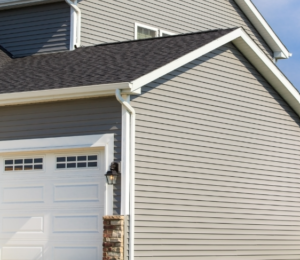
Traditional vinyl siding is popular for its low cost but lacks insulation, allowing more heat to pass through walls. This leads to higher energy bills. It can also warp more easily, making it less durable. Insulated vinyl siding provides better energy efficiency and is a sturdier, more reliable option for homeowners.
Fiber Cement Siding
Fiber cement siding is tough and fire-resistant but much heavier, making it harder to install. This raises labor costs. It also needs repainting and may crack in very hot or cold weather. Insulated vinyl siding offers a lightweight, low-maintenance solution with added energy-saving benefits.
Wood Siding
Wood siding looks natural and classic but requires a lot of care. It’s at risk of rotting and insect damage and needs frequent painting or staining. Insulated vinyl siding can mimic the wood look without all the upkeep, providing a long-lasting and energy-efficient alternative.
How to Choose the Right Insulated Vinyl Siding for Your Home
Selecting the right insulated vinyl siding involves considering various factors such as style, color, and thickness. Since insulated vinyl siding comes in many designs, homeowners can choose options that mimic the look of wood, shake, or even stone.
Style Options
Insulated vinyl siding comes in different styles like clapboard, Dutch lap, and beaded designs. Each style gives your home a unique look. This allows homeowners to choose the perfect design for their siding replacement and improve their home’s overall appearance.
Color Selection
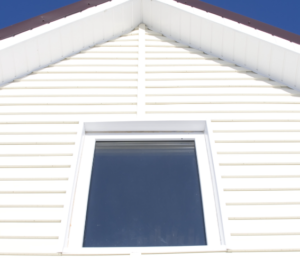
Insulated vinyl siding offers a wide range of colors, from soft neutrals to bright shades. Many products include fade-resistant technology to keep colors looking fresh for years. This makes it a smart siding replacement option for homeowners wanting lasting curb appeal.
Thickness Matters
The thickness of insulated vinyl siding affects how strong and durable it is. Thicker panels provide better impact resistance and a sturdier finish. When planning a siding replacement, choosing thicker panels can boost your home’s value and protect it for the long term.
Professional Installation: Why It Matters for Insulated Vinyl Siding
Proper installation plays a key role in how well-insulated vinyl siding performs. While some homeowners may consider DIY installation, hiring a professional ensures the siding is fitted correctly, boosting its insulating ability and weather resistance. This helps maximize long-term energy savings and home protection.
Professional installers have the right tools and know-how to deal with uneven walls or tricky architectural details. They make sure the foam insulation fits tightly, preventing air gaps that can reduce efficiency. Choosing an experienced siding contractor in North Richland Hills, TX, for siding replacement is a smart move for lasting results.
How Much Does Insulated Vinyl Siding Cost? ROI Explained
Switching to insulated vinyl siding involves an upfront cost, but the long-term savings and increased home value make it worthwhile. On average, insulated vinyl siding costs more than traditional vinyl but less than premium options like fiber cement or wood.
Initial Costs
The cost of insulated vinyl siding depends on its thickness, color, and style. Professional installation also adds to the total price. While it may cost more upfront, the long-term energy savings and low upkeep make it a smart choice for homeowners planning a siding replacement.
Return on Investment (ROI)
Investing in insulated vinyl siding can bring a high return, especially when selling your home. Buyers value energy-efficient and low-maintenance exteriors. Plus, homes with insulated vinyl siding look better, attracting more interest. This makes it a great option for those thinking about siding replacement.
Eco-Friendly Features of Insulated Vinyl Siding
In today’s environmentally conscious world, many homeowners look for ways to reduce their carbon footprint. Insulated vinyl siding offers several eco-friendly benefits.
Reduced Energy Consumption
Insulated vinyl siding helps lower energy use by improving your home’s thermal barrier. It reduces heat loss in winter and keeps your home cooler in summer. This means lower utility bills and more energy savings, making it a smart option for siding replacement.
Recyclability
Many insulated vinyl siding products can be recycled, helping to reduce waste in landfills. Some manufacturers even use recycled materials to make their siding, making it an eco-friendly choice for homeowners planning a siding replacement.
Sustainable Manufacturing Practices
Leading siding manufacturers use eco-friendly methods, like reducing water and cutting emissions during production. These sustainable practices help make insulated vinyl siding a greener option. Homeowners looking for an environmentally friendly siding replacement will appreciate this responsible manufacturing approach.
Frequently Asked Questions
Is Insulated Vinyl Siding Worth It?
Insulated vinyl siding is worth it if you want better energy efficiency, reduced noise, and enhanced durability. It provides added insulation, keeping your home warmer in winter and cooler in summer. While it costs more than regular vinyl siding, the long-term savings on energy bills make it a good investment.
How Much Does Insulated Vinyl Siding Cost?
Insulated vinyl siding typically costs between $4 and $12 per square foot, including materials and installation. The total price depends on the brand, thickness, and style of the siding, as well as labor rates in your area. On average, a full installation can range from $8,000 to $16,000 for a standard home.
How Long Does Insulated Vinyl Siding Last?
Insulated vinyl siding can last 30 to 40 years or more with proper care. Its built-in insulation adds strength, making it less likely to crack or warp over time. Regular cleaning and occasional inspections help extend its lifespan, ensuring your home stays protected and looks great for decades.
Is There Insulation Under the Vinyl Siding?
Standard vinyl siding does not have insulation underneath unless a separate layer of insulation is installed during construction. Insulated vinyl siding, however, has foam backing attached to each panel, providing built-in insulation. This type of siding offers better thermal performance than regular vinyl without additional insulation layers.
How Is Insulated Vinyl Siding Installed?
Insulated vinyl siding is installed by attaching panels with foam backing to the exterior of the house. First, the wall surface is cleaned, and any old siding is removed. Next, a weather-resistant barrier is applied before nailing the siding panels in place. Proper installation ensures tight seams and energy efficiency.
Conclusion
Insulated vinyl siding is a smart investment that combines lasting beauty with energy efficiency. It keeps your home cozy year-round and reduces energy costs, making it a popular choice for siding replacement in North Richland Hills, TX.
At North Texas Home Exteriors, we’re proud to offer professional installation services tailored to your needs. With durable materials and expert craftsmanship, our team ensures that your home not only looks great but also performs better in all seasons. Trust our experience and commitment to quality for your next project.
Don’t wait to improve your home’s comfort and value. Call North Texas Home Exteriors today and learn how insulated vinyl siding can transform your home. Let us help you take the first step toward a more energy-efficient and stylish living space!
End Note
If you want to give your home a stunning new look, North Texas Home Exteriors is here to help! We specialize in high-quality siding replacement in North Richland Hills, TX, ensuring your home stays beautiful and protected from the elements. Visit our About Us page to learn more about our trusted team and commitment to excellence.
Check out our Blog for expert tips and project inspiration. From siding and roofing upgrades to fence replacements, we provide tailored solutions to fit your style and budget. Serving areas like Hurst, TX, we take pride in helping local homeowners boost their home’s curb appeal.
Stay connected with us on Facebook and LinkedIn for updates and customer stories. If you’re ready to transform your home or have questions, contact us through our Contact Us page today. Let’s bring your home improvement vision to life!

